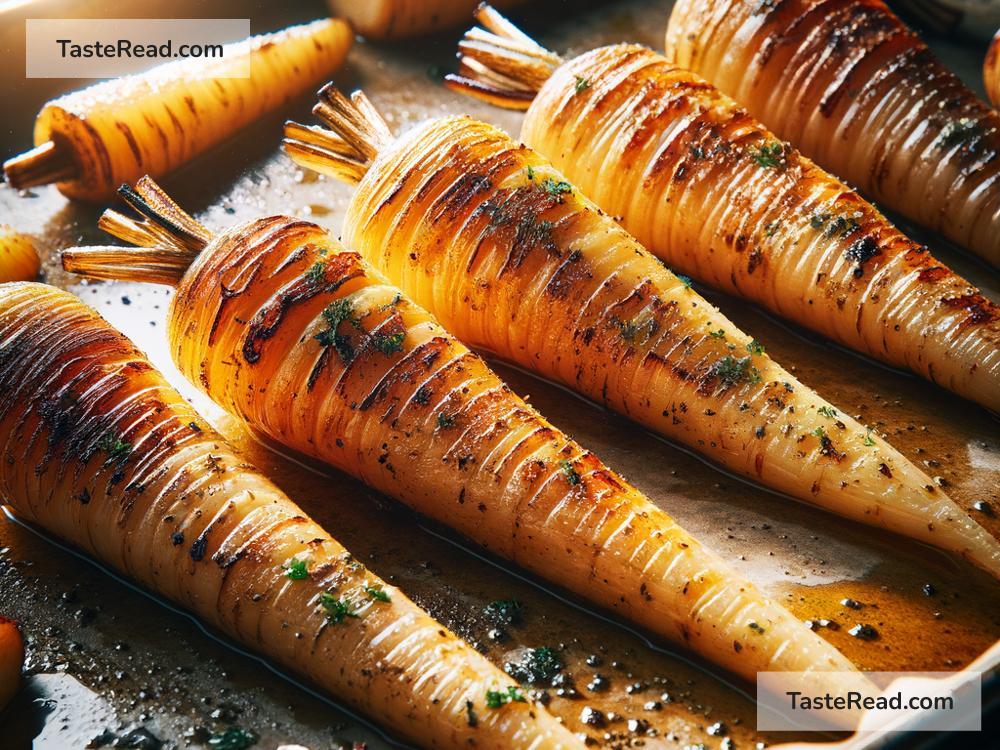Why Roasting Intensifies the Natural Sugars in Vegetables Like Parsnips
If you’ve ever tasted roasted vegetables and wondered why they taste sweeter and richer than raw or boiled ones, you’re not alone. Many home cooks and food lovers have noticed that roasting brings out a natural sweetness in veggies like parsnips, carrots, sweet potatoes, and even cauliflower. But why does this happen? The answer lies in science and the magical way heat transforms food.
Let’s explore why roasting intensifies the natural sugars in vegetables, making them irresistibly delicious.
The Role of Natural Sugars in Vegetables
Vegetables are packed with nutrients, water, fiber, and carbohydrates. Some of these carbohydrates exist in the form of natural sugars. For example, parsnips, which are root vegetables, naturally contain starches and sugars like sucrose and glucose. However, when you eat them raw, they may taste earthy and slightly sweet, but they don’t feel like a treat yet. Cooking helps release their full flavor potential.
How Roasting Works
When you roast vegetables, you’re exposing them to dry, high heat—usually in an oven. The temperature during roasting typically ranges between 375°F to 425°F (190°C to 220°C). This heat triggers several chemical changes in the vegetables. Two key processes that affect sweetness are caramelization and Maillard reactions.
Caramelization: The Sweet Transformation
Caramelization is the process where sugars in food break down and transform under high heat, leading to that golden-brown color and deep sweetness. When you roast parsnips, the sucrose, glucose, and other sugars react to the heat, becoming more concentrated. This doesn’t mean that roasting adds sugar; it simply makes the natural sugars taste more pronounced and complex.
Think about when you caramelize sugar on the stovetop—it changes from white granules to a rich, golden syrup. Something similar happens to the sugars inside vegetables while roasting. The result is that lovely sweetness that pairs so well with the slightly crispy, browned edges.
Maillard Reaction: A Flavor Explosion
The Maillard reaction is another reason roasted vegetables are so delicious. This process occurs when proteins (amino acids) and natural sugars interact under high heat. It’s similar to what happens when you brown meat or toast bread. For vegetables, the Maillard reaction creates savory, nutty, and caramel-like flavors that complement the sweetness from caramelization.
For example, a roasted parsnip might have both a sweet and a slightly savory appeal because of these combined chemical reactions. That’s why roasted vegetables offer such a rich and complex taste compared to their raw state.
Why Roasting Beats Other Cooking Methods
So, why does roasting bring out sweetness more effectively than boiling or steaming? The answer lies in moisture. When vegetables are boiled or steamed, they absorb water, which dilutes their natural flavors and sugars. On the other hand, roasting removes moisture as it cooks, concentrating the natural sugars and allowing caramelization and Maillard reactions to happen. That’s why roasted parsnips don’t just taste sweeter—they often have an addictive crispness on the outside and tender insides.
Tips for Roasting Veggies to Maximize Sweetness
Want to make the most of the natural sweetness in vegetables? Here are a few tips for roasting perfection:
-
Cut Uniform Pieces: Slice your veggies into similar-sized pieces to ensure even cooking. Smaller pieces become sweeter and crispier faster because they have more surface area for caramelization.
-
Use High Heat: Stick to temperatures around 400°F (200°C) for optimal caramelization. Lower heat tends to make vegetables soggy, while higher heat helps them brown beautifully.
-
Don’t Overcrowd the Pan: Spread your vegetables out on the baking sheet so they roast evenly. Crowding traps steam and prevents them from browning properly.
-
Add Oil and Seasoning: Toss veggies with olive oil, salt, and spices before roasting. Oil helps create crisp edges, while seasoning enhances their natural flavors.
-
Experiment with Cooking Times: Root vegetables like parsnips, carrots, and sweet potatoes typically roast in 25–40 minutes, depending on size and texture. Check them frequently to avoid burning.
Why Roasted Parsnips Deserve a Spot on Your Plate
Parsnips are an underrated vegetable that deserves more love. Roasting transforms this humble root into a golden, caramelized dish bursting with sweetness. The high starch content makes parsnips particularly great for caramelization. Their natural sugars shine brightest when exposed to dry heat, making them a perfect side dish or even a snack.
Parsnips also pair well with other roasted veggies like carrots and onions, allowing you to create a medley of flavors in one pan. For an extra touch of sweetness, drizzle with honey or balsamic glaze after roasting—it’s a crowd-pleaser!
The Science Behind the Deliciousness
Roasting relies on simple chemistry to elevate the taste of vegetables. By applying high heat, you’re enabling caramelization and Maillard reactions to unlock their natural flavor notes. Vegetables like parsnips, filled with starches and natural sugars, undergo a satisfying transformation that turns them into dishes worth savoring.
In Conclusion
Roasting does more than cook vegetables—it enhances their natural qualities. The dry heat concentrates sugars, creating a sweet and savory balance that can turn something as simple as a parsnip into a culinary masterpiece. Whether you’re preparing a cozy family dinner or trying to eat more veggies, roasting is a foolproof way to maximize flavor. So fire up your oven, grab your parsnips, and let the magic happen. You’ll never look at roasted vegetables the same way again!


